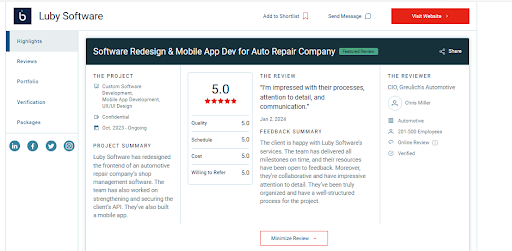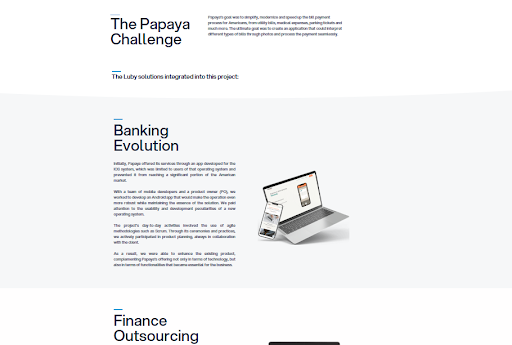Nearshore Development Recruitment Strategies: Assessing Common and Unique Approaches

Nearshore Development Recruitment Strategies: Assessing Common and Unique Approaches
Choosing the best software development partner to help you with your digital transformation can be the most challenging step. That's why paying attention to all aspects can make a significant difference in the outcome, no matter how unusual they may be. I outline some of these issues in this article - check them out.

As you know, choosing the right development partner requires a thorough evaluation. You may be wondering why companies are turning to nearshore software development.
The main reason is the growing demand for software development services. This forces companies to explore options beyond national borders and consider the nearshore model. But there are a few more; you can review some of them here.
Why do Companies Choose Nearshore Software Development?
These reasons may vary depending on the specific needs and objectives of the organization. Nearshore software development involves outsourcing software development tasks to a service provider located in a nearby country or region. Here are some common reasons why companies choose nearshore software development:
- Cost Efficiency: Nearshore outsourcing allows companies to benefit from lower labor costs without compromising quality. Choosing a nearby location reduces costs compared to onshore development, making it an attractive, cost-effective solution.
- Time zone proximity: Nearshore development often involves working with teams in neighboring or similar time zones. This facilitates real-time communication, collaboration, and faster response times because significant time zone differences cause fewer delays.
- Cultural compatibility: Nearshore teams often share similar cultural and work norms, which can improve collaboration and understanding between the client and the development team. This can lead to smoother communication and better integration of the development process with the company's goals and values.
- Language proficiency: Proximity often means a common language or fluency in a common language. This minimizes language barriers, reduces the likelihood of misunderstandings, and increases effective communication within the development team.
- Access to a skilled talent pool: Nearshore locations often have a pool of highly skilled professionals with expertise in the latest technologies. This allows companies to tap into a diverse talent pool and access specialized skills that may not be readily available in their home country.
- Ease of travel: Proximity allows for more accessible and less expensive travel when necessary. Face-to-face interactions, especially during project kickoffs or critical phases, can be critical to building strong relationships and ensuring project success.
- Regulatory Alignment: Nearshore outsourcing often involves working with countries with similar or compatible regulatory environments. This can simplify legal and compliance issues and reduce the potential risks of different regulations.
- Agile collaboration: Nearshore teams can collaborate more effectively because of the reduced physical and cultural distance. This is particularly beneficial for agile methodologies, where rapid iterations and regular communication are essential.
In summary, choosing nearshore software development is influenced by cost savings, geographic proximity, cultural alignment, language skills, access to skilled talent, ease of travel, regulatory similarity, and the ability to foster agile collaboration.
However, we may encounter uncommon aspects. I remember eight of them. Please review.

8 Not-so-Common Aspects to Consider while Hiring Nearshore Software Development Services
-
Data Security and Legal Compliance:
Ensure the nearshore development team meets data security standards and complies with relevant legal regulations. This is crucial, especially if your project involves sensitive or regulated data.
-
Infrastructure and Technology:
Evaluate the technology infrastructure of the nearshore location, including internet connectivity, hardware, and software capabilities. A reliable technology infrastructure is crucial for seamless collaboration.
Make sure they have solid skills in technologies relevant to your project. Analyze past experience, portfolios, and certifications to ensure the team can deliver high-quality solutions. Examples of certifications available in the market can be found here.
Reviews on platforms like Clutch can help you compare vendors and give you more confidence in choosing the right partner.Example:

-
Project Management and Methodologies:
Understand the project management practices and methodologies followed by the nearshore team. This includes how they track progress, handle changes, and communicate updates. Alignment in project management approaches can contribute to project success.
-
Flexibility and Adaptability:
Assess the nearshore team's flexibility and adaptability to changes in project requirements. A team that can adapt to evolving project needs and is open to feedback is valuable for long-term collaboration.
-
Experience with Remote Work:
Check if the nearshore team has experience working in remote setups. Remote work requires different skills and practices, and a team with remote work experience is likely to handle distributed collaboration more effectively.
-
References and Case Studies:
Ask for references and case studies from the nearshore development provider. Speak to their previous clients to get insights into their performance, reliability, and overall experience working with them.
You can have a look at some examples of nearshore cases here.
-
Disaster Recovery and Contingency Planning:
Inquire about the nearshore team's disaster recovery and contingency plans. Knowing how they handle unexpected situations or crises can give you confidence in their ability to keep the project on track.
-
Effective Communication:
Effective communication plays a critical role in the success of any software development project. Ensure the nearshore partner has an efficient communication infrastructure, including regular meetings, transparent status reports, and clear communication skills in your preferred language. For example, teams fluent in English can make all the difference in the smooth running of your project.
Considering these not-so-common aspects will help you make a more informed decision when hiring nearshore software development services, leading to a successful and collaborative partnership.
When selecting a nearshore software development company, carefully evaluating these issues is critical. A systematic approach to evaluation will ensure that you choose a partner that not only meets your technical requirements but is also an excellent cultural and logistical fit for your organization. With the right partner, nearshore development can become an effective and valuable extension of your internal team, driving the success of your software projects.
